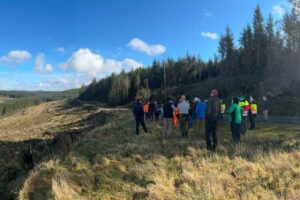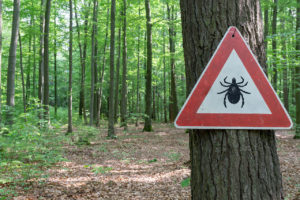
A Year in Forestry:
2014 Analysis
ICF Executive Director, Shireen Chambers FICFor, examines the highs and lows for forestry in 2014 , a year that has brought plant health and urban forestry matters to the fore.
2014 has shown that forestry continues to be a political hot potato with ministers playing pass-the-parcel with the portfolio in England, Wales and just recently, Scotland also. Timber prices continued to rise giving us the best opportunity yet to get unmanaged woodlands into some sort of management, be it for wildlife or timber. Known pests and diseases crept around our city trees and forests but the weather seemed to hold them at bay this year with no major new crisis occurring.
In January, the English Forestry Forum received the Forestry and woodland policy statement – ‘One Year On’ , where government outlined its effectiveness in implementing the recommendations of the Independent Panel, whose report was made the year before. It’s anyone’s guess as to whether or not a new government in May will hope to quietly bury this report – ICF will certainly be reminding those in power of the sensible recommendations in it.
As the south of the country recovered from some of the worst flooding since records began, forestry seemed to suffer. The decision to extend Forestry Commission England’s Woodfuel Woodland Improvement Grant was reversed in order to boost grant aid available to those affected by the floods.
Urban Matters
In the spring urban issues took up our time with the ICF National Conference, Trees People and the Built Environment II, taking place in Birmingham. We heard the latest research and learnt about the many benefits of street trees, including surface water management and the reduction of the Urban Heat Island (UHI) effect. Some more abstract benefits of urban greening also emerged – those relating to human health and psychology. Not only do humans benefit from reduced CO2 levels where trees are present, but they also feel better in the emotional sense – research has shown that this has improved sales in retail environments, discussed by Kathleen Wolf in a recent article for ICF.
In June of this year, an inquest found that the death of a tourist, who was hit by a falling branch while visiting the Royal Botanic Gardens, Kew, was accidental. While the inquest ultimately found that the death had not been preventable by any reasonable means, it did open up a debate among our members about Summer Branch Drop and whether a more pro-active approach to tree management could reduce the risk of branch failure.
Biosecurity Legislation
This was a big year for developments in plant health with Defra’s Plant Biosecurity Strategy for Great Britain and Tree Health Management Plan launched in April and a merger for FERA with animal health in October. To the consternation of many forest managers Warfarin was officially withdrawn as approved grey squirrel bait – sale ended 30 September, with instruction that all stocks must be used within one year.
The Plant Health (Forestry) (Phytophthora ramorum Management Zone) Order 2014 became law in Scotland, which aimed to make it easier for the forestry sector to deal with large-scale outbreaks of the disease in larch in south west Scotland. ICF will be exploring a wide range of plant health topics at our forthcoming national conference Tree Health, Resilience and Sustainability in April in Cardiff.
An interesting statistic from Forestry Commission for 2014 informs us that the UK was the third largest net importer of forest products in 2012, behind China and Japan. If that doesn’t spur us on to make more of our woodlands in 2015, then we need to look again at what we’re doing as a sector.





